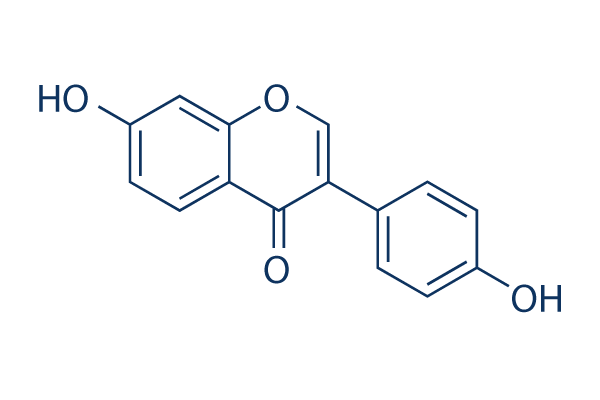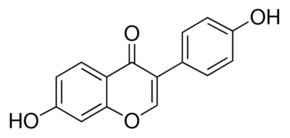Formula C15H10O4 Appearance Pale yellow prisms | Molar mass 254.23 g/mol | |
 | ||
Daidzein structurally belongs to the group of isoflavones.
Contents
Natural occurrences

Daidzein and other isoflavone compounds, such as genistein, are present in a number of plants and herbs like Kwao Krua (Pueraria mirifica) and Kudzu (Pueraria lobata). It can also be found in Maackia amurensis cell cultures.
Biological activities

Daidzein can be converted to its end metabolite S-equol in some humans based on the presence of certain intestinal bacteria. Based on several decades of research, S-equol has potential for significant health benefits.

Daidzein has no classification in the United States, where it is not considered to be generally recognized as safe (GRAS), and has not been approved as a drug for any indication. It is a component of foods and dietary supplements derived from soy. Dietary supplements are not regulated as drugs in the U.S., and the labeling of dietary supplements in the U.S. may not describe the supplement as having any drug activity or effectiveness.

Scientists have studied some of the activities of daidzein in their laboratories, working with cells or with animals such as mice. Studies in cells and in animals sometimes give hints as to what a chemical might do when given to humans, but no one can know what a chemical does in humans until the chemical is tested in a clinical trial.
Daidzein has been found to act as an agonist of the GPER (GPR30).
Activation of PPARs
Daidzein transactivates all three PPAR isoforms, α, δ, and γ and influences target cells.
Cell proliferation studies

Daidzein has both estrogenic and anti-estrogenic effects. Experiments in cells and in animals showed that lower concentrations stimulate breast tumor growth in in vitro and in vivo, and ihibits the antitumor effect of the cancer drug tamoxifen, but higher concentrations (above 10 μM) have the contrary effect. T47D:A18/PKC alpha tumor growth was demonstrated to be stimulated by genistein, but partially inhibited by daidzein; however, coadministration of tamoxifen with either daidzein or genistein produced tumors of greater size.
Antioxidant

Scientific studies of daidzein's antioxidant properties have given contradictory results: some studies have shown antioxidant properties in laboratory experiments on cells, but in other experiments daidzein has caused oxidative stress on cells.
Daidzein metabolite S-equol activities
Daidzein, when consumed from soy, is transformed in some humans, but not all, to produce S-equol [7-hydroxy-3-(49-hydroxyphenyl)-chroman], Because it is a metabolite of daidzein, S-equol is not of plant origin. The molecular and physical structure of S-equol is similar to that of estradiol, the main sex hormone found in women.
The ability to transform daidzein into S-equol is based on the presence of certain intestinal bacteria. In fact, several studies indicate that only 25 to 30 percent of the adult population of Western countries produces S-equol after eating soy foods containing isoflavones, significantly lower than the reported 50 to 60 percent frequency of equol-producers in adults from Japan, Korea, or China.
Although still under investigation, the ability to produce S-equol may be associated with other health benefits, according to data from epidemiological and clinical trials. Studies in both animal models and humans have yielded data about the potential of S-equol use in menopause breast and prostate cancer, and bone health.
